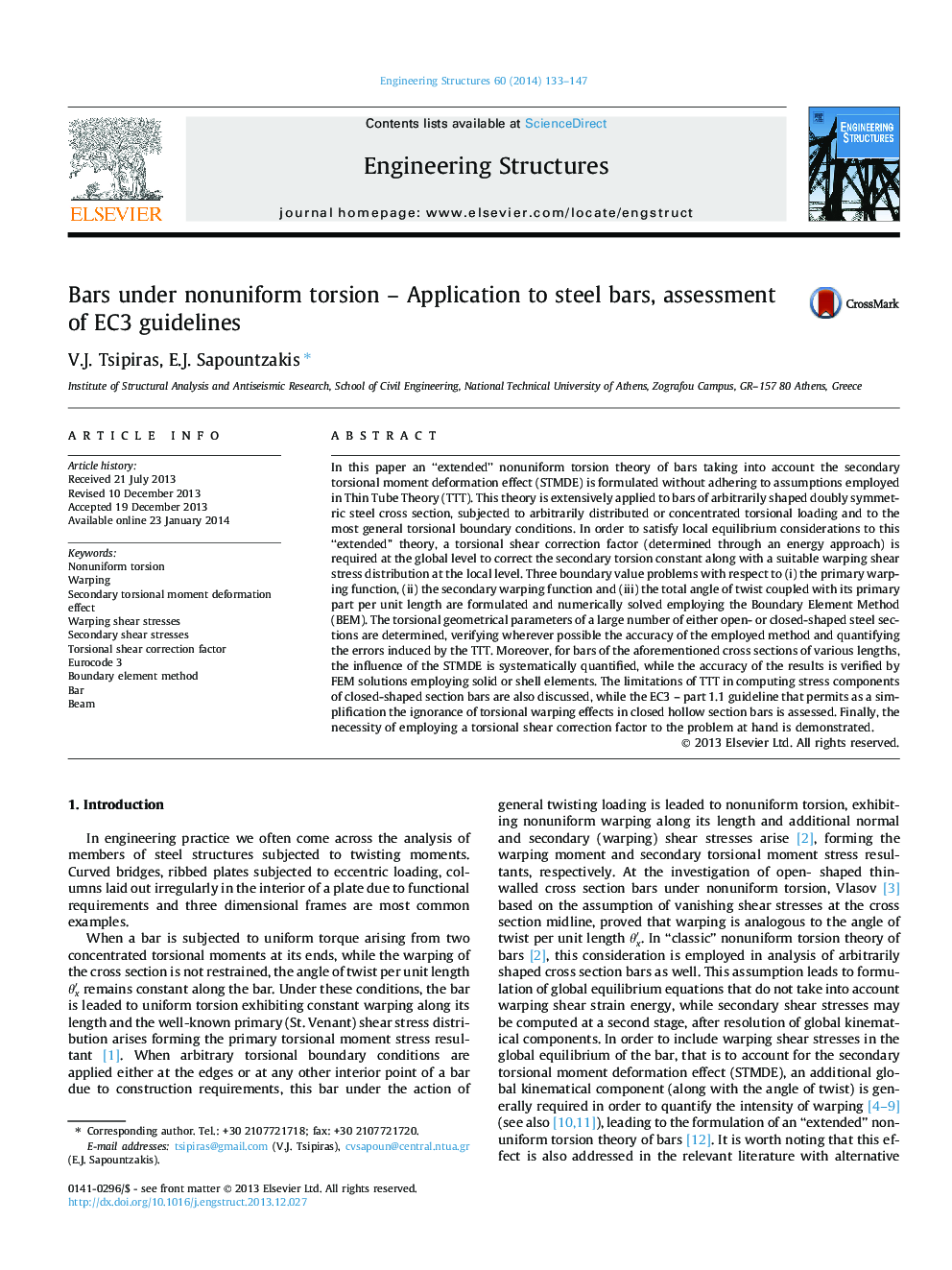| کد مقاله | کد نشریه | سال انتشار | مقاله انگلیسی | نسخه تمام متن |
|---|---|---|---|---|
| 266859 | 504382 | 2014 | 15 صفحه PDF | دانلود رایگان |

• Bars under general torsional boundary conditions and loading.
• Investigation of secondary torsional moment deformation effect.
• Assessment of EC3 – part 1.1 guidelines related to torsion.
• Necessity of employing a torsional shear correction factor is studied.
• Reliability of Thin Tube Theory in open- and closed-shaped section bars.
In this paper an “extended” nonuniform torsion theory of bars taking into account the secondary torsional moment deformation effect (STMDE) is formulated without adhering to assumptions employed in Thin Tube Theory (TTT). This theory is extensively applied to bars of arbitrarily shaped doubly symmetric steel cross section, subjected to arbitrarily distributed or concentrated torsional loading and to the most general torsional boundary conditions. In order to satisfy local equilibrium considerations to this “extended” theory, a torsional shear correction factor (determined through an energy approach) is required at the global level to correct the secondary torsion constant along with a suitable warping shear stress distribution at the local level. Three boundary value problems with respect to (i) the primary warping function, (ii) the secondary warping function and (iii) the total angle of twist coupled with its primary part per unit length are formulated and numerically solved employing the Boundary Element Method (BEM). The torsional geometrical parameters of a large number of either open- or closed-shaped steel sections are determined, verifying wherever possible the accuracy of the employed method and quantifying the errors induced by the TTT. Moreover, for bars of the aforementioned cross sections of various lengths, the influence of the STMDE is systematically quantified, while the accuracy of the results is verified by FEM solutions employing solid or shell elements. The limitations of TTT in computing stress components of closed-shaped section bars are also discussed, while the EC3 – part 1.1 guideline that permits as a simplification the ignorance of torsional warping effects in closed hollow section bars is assessed. Finally, the necessity of employing a torsional shear correction factor to the problem at hand is demonstrated.
Journal: Engineering Structures - Volume 60, February 2014, Pages 133–147